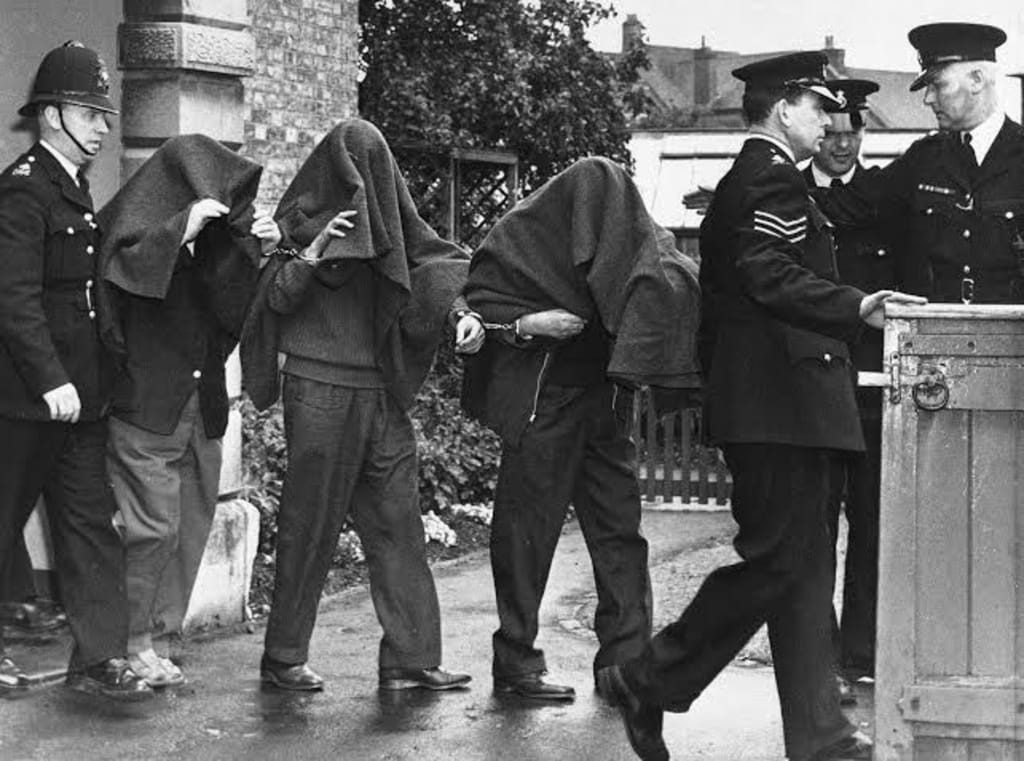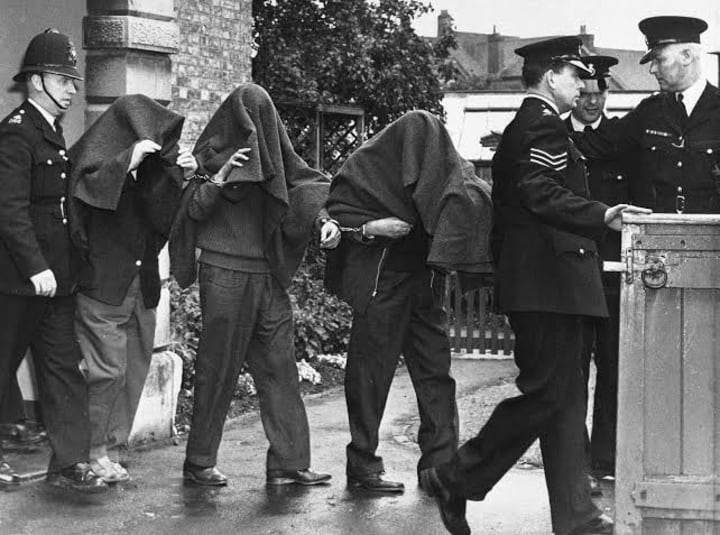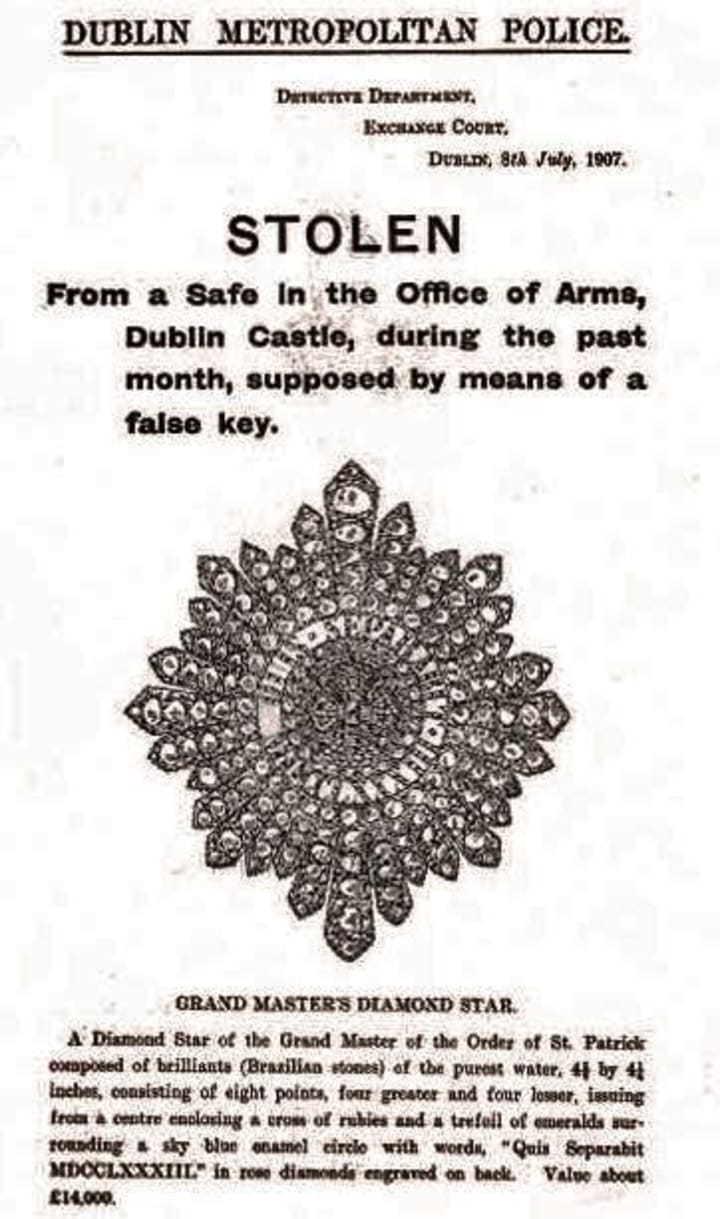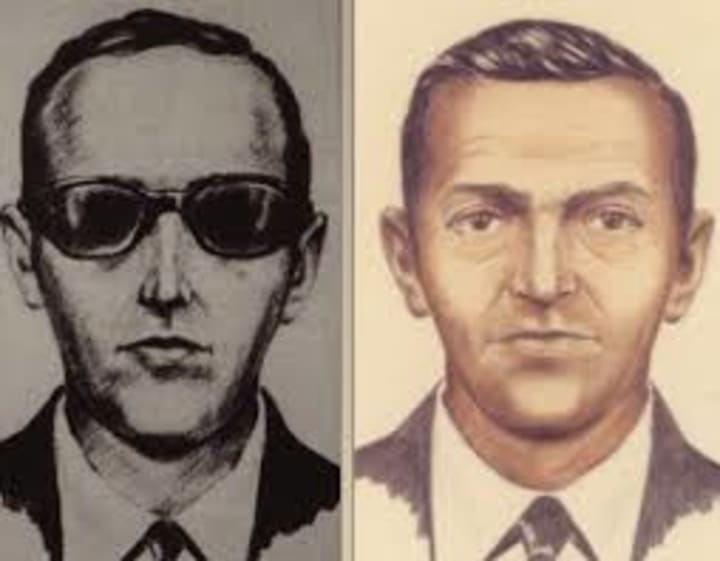Top 10 most famous art heists in history.
Top 10 unsolved theft in history

1. The Mona Lisa

One of the most famous art heists in history involves the theft of the Mona Lisa from the Louvre Museum in Paris in 1911. The painting, created by Italian artist Leonardo da Vinci in the early 16th century, is widely considered to be one of the greatest masterpieces of all time.
On the morning of August 21, 1911, museum staff discovered that the Mona Lisa was missing from its usual spot in the Salon Carré. The theft went unnoticed for more than 24 hours, during which time the thief managed to leave the museum undetected. It wasn't until the next day, when a visitor noticed the empty space where the painting had been, that the alarm was raised.
Despite an extensive investigation, the thief was not caught, and the painting remained missing for two years. The theft sparked widespread outrage and intense media coverage, and theories about the culprit and motive were plentiful. Some speculated that the theft was part of an elaborate plot by art dealers to increase the painting's value, while others believed it was the work of a patriotic Italian who wanted to return the painting to its homeland.
In 1913, the painting was finally recovered when the thief attempted to sell it to an art dealer in Florence, Italy. The dealer, suspicious of the painting's provenance, contacted the police, who eventually traced the painting back to the Louvre. The thief, a museum employee named Vincenzo Peruggia, was arrested and sentenced to prison for the crime.
To this day, the theft of the Mona Lisa remains one of the most mysterious art heists in history. The motives behind the theft, as well as how Peruggia managed to smuggle the painting out of the museum undetected, are still the subject of speculation and debate. The incident has also added to the Mona Lisa's already considerable mystique and allure, cementing its status as one of the most iconic and enigmatic works of art in the world.
2. The Isabella Stewart Gardner Museum heist

On March 18, 1990, two thieves disguised as Boston police officers broke into the Isabella Stewart Gardner Museum and stole 13 works of art, including a Vermeer, a Rembrandt, and a Manet. The heist was one of the most audacious art thefts in history, with the stolen works having an estimated value of $500 million.
Despite a massive investigation and a $10 million reward for information, the stolen art has never been recovered, and the case remains one of the most baffling mysteries in the art world.
The museum itself is a work of art, designed to resemble a Venetian palazzo. It was created by Isabella Stewart Gardner, a wealthy art collector who spent decades collecting works from around the world. She designed the museum as a place to house her collection and left strict instructions that the collection should remain unchanged after her death.
On the night of the heist, the two thieves entered the museum just after midnight and overpowered the security guards. They spent a total of 81 minutes in the museum, stealing 13 works of art, including several large paintings that were cut out of their frames.
The theft was not discovered until the next morning when the museum staff arrived to find the empty frames. The FBI was called in to investigate, but despite a massive investigation and a number of promising leads, the stolen art has never been recovered.
Over the years, there have been a number of theories about the identity of the thieves and the whereabouts of the stolen art. Some have suggested that the works were stolen to order by a wealthy collector, while others have suggested that they were sold to fund criminal activities.
There have been a number of false leads over the years, including a number of people claiming to have information about the stolen art in exchange for the reward money. Despite this, the case remains unsolved, and the stolen art remains missing.
The Isabella Stewart Gardner Museum heist is a reminder of the vulnerability of even the most secure art institutions and the lengths that some will go to obtain valuable works of art. It is a mystery that continues to captivate the public and the art world and is likely to remain unsolved for many years to come.
3. The Great Train Robbery

The Great Train Robbery of 1963 is one of the most infamous heists in history. A group of 15 robbers, led by Bruce Reynolds, targeted a Royal Mail train travelling between Glasgow and London, stealing £2.6 million in cash, equivalent to over £50 million today. The robbers were able to stop the train by tampering with the signal lights, then used explosives to break into the carriages and steal the money.
The Great Train Robbery was a highly organized crime, involving meticulous planning and preparation. The robbers had insider information, knowing the exact schedule and route of the train. They also had access to military explosives, which they used to break into the carriages. The heist was successful, and the robbers were able to evade the police for several months.
However, the robbers were eventually caught and brought to justice. Several members of the gang, including Reynolds, were given long prison sentences. Some of the robbers were able to evade capture for several years, living in luxury abroad with their share of the money. But eventually, they too were caught and sent to prison.
The Great Train Robbery has become a legendary crime, inspiring numerous books, films, and TV shows. The mystery of what happened to the missing money has also captivated the public imagination. Despite extensive searches and investigations, much of the stolen cash has never been recovered. Some of the robbers claimed to have buried the money in various locations, but it has never been found.
The Great Train Robbery remains a fascinating case study of a daring and audacious crime. It also highlights the importance of effective law enforcement and criminal justice systems in bringing criminals to justice. While the robbers were able to evade the police for a time, they were eventually caught and punished for their crimes. The Great Train Robbery continues to capture the public imagination as a testament to human ingenuity, daring, and the ever-present desire for wealth and excitement.
4. The Amber Room

The Amber Room is a stunning and legendary piece of art that has been shrouded in mystery and intrigue for centuries. The room was originally created for the Russian palace of Catherine I in the early 18th century and was considered to be one of the world's most stunning and valuable works of art.
However, during World War II, the Amber Room was stolen by the Germans, and its whereabouts remain unknown to this day. The theft of the Amber Room is one of the most mysterious and intriguing art heists in history, with many theories and conspiracies surrounding its disappearance.
One of the most popular theories is that the Amber Room was destroyed during the war. This theory suggests that the Germans were unable to transport the room and decided to destroy it rather than let it fall into the hands of the advancing Soviet army. While there is evidence to suggest that the room may have been destroyed, there is no concrete proof of this theory.
Another theory suggests that the Amber Room was hidden by the Germans in a secret location, and that it remains hidden to this day. According to this theory, the room may have been hidden in a secret underground bunker or in a remote mountain location, and it could still be intact and waiting to be discovered.
There have been many attempts to find the Amber Room over the years, but none have been successful. Some believe that the Amber Room was smuggled out of Germany by the Nazis at the end of the war, and that it remains in private hands to this day. Others believe that the room is still hidden in Germany or Russia, waiting to be discovered by a lucky treasure hunter or investigator.
Despite the many theories and attempts to solve the mystery of the Amber Room, its whereabouts remain unknown to this day. The disappearance of this stunning work of art is a fascinating and enduring mystery that has captured the imagination of people around the world for decades, and its discovery would undoubtedly be one of the most exciting art discoveries in history.
5. The Irish Crown Jewels

The Irish Crown Jewels theft of 1907 remains one of the most mysterious heists in history. The jewels, which were made for the Order of St. Patrick, were last worn by the Lord Lieutenant of Ireland, Earl of Aberdeen, at a banquet in Dublin Castle on July 11th, 1907. The next day, they were found to be missing from the safe where they were supposed to be kept. The investigation that followed yielded no concrete evidence, and the jewels have never been recovered.
The theft shocked the Irish public, as the jewels had been an important part of Ireland's heritage for centuries. The Order of St. Patrick was established in 1783, and its members included the most powerful and influential people in Ireland, such as the Lord Lieutenant, the Chief Secretary for Ireland, and other high-ranking officials. The order was dissolved in 1922, but the jewels remain a symbol of Ireland's rich history and culture.
The Irish Crown Jewels theft was a highly sophisticated operation. The safe in which the jewels were kept was opened with a key that was supposed to be kept in a separate room. The locks on the doors leading to the safe were found to be in perfect condition, indicating that the thief had not used force to gain entry. The thief or thieves left no trace behind, making it impossible for the police to identify any suspects.
Several theories have been put forward over the years about who might have been responsible for the theft. Some people believe that it was an inside job, possibly involving one of the officials responsible for the jewels' safekeeping. Others speculate that the jewels were stolen by members of the Irish Republican Brotherhood, a secret society that sought to overthrow British rule in Ireland. There is no concrete evidence to support either of these theories, however, and the mystery of the Irish Crown Jewels remains unsolved.
The theft of the Irish Crown Jewels is a reminder of how easily the most valuable and treasured objects can disappear without a trace. The loss of such a significant piece of Ireland's history and culture is a tragedy that continues to be felt to this day. The theft of the Irish Crown Jewels is a mystery that will likely never be solved, but it remains an important part of Ireland's heritage and a symbol of the country's rich cultural legacy.
6. The Antwerp Diamond Heist

The Antwerp Diamond Heist, also known as the "heist of the century," was a major robbery that took place in Antwerp, Belgium, on February 15, 2003. The heist is considered one of the largest diamond thefts in history, with an estimated value of $100 million.
The heist took place at the Antwerp Diamond Centre, which is one of the most secure buildings in the world. The center is home to 380 diamond companies, and it is heavily guarded with high-tech security systems, cameras, and armed guards. The perpetrators of the heist, however, managed to bypass all of these security measures and successfully stole millions of dollars’ worth of diamonds.
The heist was meticulously planned and executed. The robbers posed as diamond merchants, renting an office space in the building for months and gaining access to the vault where the diamonds were stored. They then used their insider knowledge to gain access to the vault and disable the alarm system. The robbers then used a thermal lance to cut through the vault's steel barrier, gaining access to the diamonds. The entire heist took only a few hours, and the robbers were able to escape undetected.
The diamonds stolen in the heist were of high quality and included rare pink and blue diamonds. Many of the diamonds were already cut and polished, which made them easy to sell on the black market. The robbers reportedly left with approximately 123 out of 160 safety deposit boxes.
The police investigation was extensive, and many suspects were identified and arrested, but none of them were able to provide conclusive evidence or lead to the recovery of the stolen diamonds. Some suspects were later released, and others were sentenced to lengthy prison terms for their involvement in the heist.
The Antwerp Diamond Heist remains one of the most mysterious and unsolved thefts in history. The diamonds have never been recovered, and the identity of the robbers remains unknown. It is believed that the diamonds were either sold on the black market or were dismantled and sold in smaller pieces. The heist has become the subject of many books and documentaries and continues to capture the public's imagination as a remarkable feat of criminal ingenuity.
7. The Gardner Museum Art Heist

The Isabella Stewart Gardner Museum Art Heist is considered one of the most baffling mysteries in the history of art theft. On the night of March 18, 1990, two men disguised as police officers entered the museum in Boston and made off with 13 works of art, including masterpieces by Rembrandt, Vermeer, and Degas. The theft remains unsolved, and the stolen works are still missing.
The thieves gained access to the museum by posing as police officers responding to a disturbance call. Once inside, they handcuffed the guards and tied them up in the basement. The thieves then proceeded to the second floor, where they stole the works of art.
The stolen pieces include Vermeer's The Concert, one of only 34 known paintings by the Dutch master; Rembrandt's Christ in the Storm on the Sea of Galilee, his only known seascape; and A Lady and Gentleman in Black, a painting by Johannes Vermeer's contemporary, Rembrandt van Rijn.
The Gardner Museum Art Heist is not only notable for the high value of the stolen works, but also for the lack of progress in solving the case. Despite an extensive investigation by the FBI and other law enforcement agencies, the identity of the thieves remains unknown and the stolen works have never been recovered.
Over the years, there have been numerous leads and suspects, but none have panned out. In 2013, the FBI announced that they knew the identity of the thieves, but that they were deceased and the works had been sold off or destroyed. However, this theory has been met with skepticism by many in the art world.
The Gardner Museum Art Heist remains a source of fascination and intrigue for many. The mystery of the missing works of art continues to captivate the public, and the hope of their recovery remains a tantalizing possibility. The case serves as a reminder of the importance of safeguarding cultural treasures and the ongoing battle against art theft.
8. The Hope Diamond

The Hope Diamond is one of the most famous and valuable diamonds in the world, with an estimated value of over $250 million. The diamond is a deep blue color and weighs 45.52 carats. Its history is shrouded in mystery and legend, which has only added to its allure.
The Hope Diamond is said to have originated in India and was owned by several prominent figures throughout history, including the French king Louis XIV, who had it set in a royal necklace. Legend has it that the diamond was cursed, and many of its owners met with untimely deaths or misfortune.
In the early 20th century, the Hope Diamond was owned by the American socialite Evalyn Walsh McLean. McLean was known for her extravagant lifestyle and love of jewelry, and the diamond was the centerpiece of her collection. However, her ownership of the diamond was also marred by tragedy, as both her son and husband died in separate incidents.
The diamond was later sold to jeweler Harry Winston, who donated it to the Smithsonian Institution in 1958. The diamond is now on display in the Smithsonian’s National Museum of Natural History, where it continues to draw crowds of visitors.
Despite its fame, the Hope Diamond continues to be shrouded in mystery. The diamond’s origins are not well-documented, and there are many theories about where it came from and how it ended up in the hands of various owners throughout history. The diamond is also rumored to be cursed, with some people believing that anyone who owns or wears it will suffer misfortune.
However, the curse of the Hope Diamond is likely just a myth. Many of the supposed “cursed” events associated with the diamond can be attributed to coincidence or natural causes. Nevertheless, the diamond’s mysterious history and legends surrounding it have only added to its appeal and fascination.
Overall, the Hope Diamond remains one of the most enigmatic and intriguing diamonds in the world. Its history and legend will continue to capture the imagination of people for generations to come.
9. The Baghdad Museum Robbery

The Baghdad Museum Robbery is a mystery that has captured the attention of historians, archeologists, and treasure hunters around the world. The event occurred on April 10, 2003, when the Iraq War was still raging. A group of looters broke into the National Museum of Iraq in Baghdad and stole thousands of ancient artifacts, including priceless pieces from the Sumerian, Babylonian, and Assyrian periods.
The robbery was shocking for several reasons. First, the museum was a repository of some of the world's most valuable and rare historical treasures. Second, the theft occurred during a time of conflict, when security in the city was tenuous at best. And finally, the heist happened under the watchful eyes of the US military, who were patrolling the city at the time.
In the immediate aftermath of the robbery, it was unclear who was behind the theft. Some reports suggested that the looters were local criminals taking advantage of the chaos caused by the war. Others speculated that the theft was orchestrated by foreign collectors or even by rival nations seeking to erase Iraq's cultural heritage.
Over time, more information emerged about the robbery. The looters were revealed to be a mix of local Iraqis and foreign criminals who had traveled to the country specifically to steal the artifacts. The group had organized a complex heist, with some members using distraction tactics to keep museum guards occupied while others went through the galleries and took as many items as they could carry.
The aftermath of the theft was chaotic. The museum was in disarray, with empty display cases and shattered glass scattered throughout the galleries. It was not clear how many items had been stolen, but the initial estimate was that tens of thousands of artifacts were missing. The looters had taken everything from ancient pottery and statuettes to cuneiform tablets and priceless jewelry.
Efforts to recover the stolen artifacts have been ongoing ever since. Some items have been returned, often through the efforts of international law enforcement agencies and governments. However, many treasures remain missing, with some likely sold on the black market or hidden away in private collections. The Iraq War may have officially ended, but the legacy of the Baghdad Museum Robbery continues to this day as a testament to the fragility of our shared cultural heritage
10. The D.B. Cooper hijacking

On November 24, 1971, a man who identified himself as "Dan Cooper" purchased a one-way ticket on Northwest Orient Airlines from Portland, Oregon to Seattle, Washington. Once aboard the Boeing 727, Cooper passed a note to a flight attendant indicating that he had a bomb and demanded $200,000 in ransom money and four parachutes. After the plane landed in Seattle, Cooper released the passengers and some of the crew in exchange for the money and parachutes. The plane then took off again, with Cooper and the remaining crew members on board.
During the flight, Cooper donned a parachute and lowered the rear stairs of the plane, then jumped into the night sky over rural Washington State.
About the Creator
Enjoyed the story? Support the Creator.
Subscribe for free to receive all their stories in your feed. You could also pledge your support or give them a one-off tip, letting them know you appreciate their work.





Comments
There are no comments for this story
Be the first to respond and start the conversation.